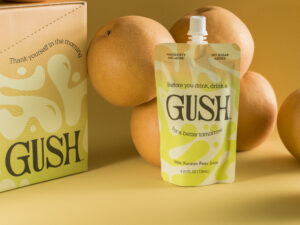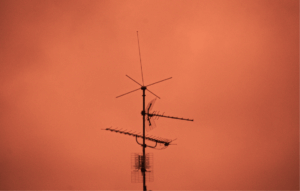Recovery is the name of the game—and if you’re not playing it right, you’re playing with fire. High-performance athletes push their bodies to the limit. And while that’s great for highlight reels and medal podiums, it also means wear and tear, especially the kind known as exercise-induced muscle damage (EIMD). Cue the dreaded DOMS—Delayed Onset Muscle Soreness—that makes walking down stairs feel like scaling Everest with Jell-O legs.
Enter Cold Water Immersion (CWI), the icy embrace of recovery. But not all cold plunges are created equal. New research has finally dropped a comprehensive roadmap for dialing in the perfect chill. This isn’t about just toughing it out in a cold tub—it’s about precision, protocols, and maximizing recovery with science-backed strategy.
Key Findings from the Latest Meta-Analysis on Cold Water Immersion
In a systematic review and network meta-analysis, researchers from Capital University of Physical Education and Sports in Beijing pulled data from 55 randomized controlled trials, encompassing 1,139 participants. The goal? To pinpoint which CWI protocols—specifically different combinations of water temperature and immersion duration—best support recovery from EIMD.
The study targeted three major recovery outcomes:
DOMS (Delayed Onset Muscle Soreness)
CK (Creatine Kinase levels, a marker of muscle damage)
JUMP (Jump performance, a proxy for neuromuscular function)
These metrics were chosen because they represent the full trifecta of post-training pain, performance, and physiology.
Protocol Comparisons: Duration and Temperature Variables
For clarity, here’s a quick breakdown of the acronyms used in this section. CWI stands for Cold Water Immersion, a method used to enhance recovery after exercise. The abbreviations are categorized based on both duration and temperature:
SD-LT-CWI: Short-Duration, Low-Temperature Cold Water Immersion (<10 minutes at 41°F–50°F)
MD-LT-CWI: Medium-Duration, Low-Temperature Cold Water Immersion (10–15 minutes at 41°F–50°F)
LD-LT-CWI: Long-Duration, Low-Temperature Cold Water Immersion (>15 minutes at 41°F–50°F)
MD-MT-CWI: Medium-Duration, Medium-Temperature Cold Water Immersion (10–15 minutes at 52°F–59°F)
MD-HT-CWI: Medium-Duration, High-Temperature Cold Water Immersion (10–15 minutes at 61°F–68°F)
LD-HT-CWI: Long-Duration, High-Temperature Cold Water Immersion (>15 minutes at 61°F–68°F)
Six CWI categories were tested:
SD-LT-CWI: <10 min, 41°F–50°F
MD-LT-CWI: 10–15 min, 41°F–50°F
LD-LT-CWI: >15 min, 41°F–50°F
MD-MT-CWI: 10–15 min, 52°F–59°F
MD-HT-CWI: 10–15 min, 61°F–68°F
LD-HT-CWI: >15 min, 61°F–68°F
The researchers weren’t just pitting cold versus colder—they were mapping the physiological sweet spots that separate “meh” recovery from “wow, I feel like I didn’t even train yesterday”.
Identifying the Most Effective Immersion Strategies
Two contenders emerged as the cold kings:
MD-LT-CWI (10–15 min, 41°F–50°F): Best for reducing CK and improving JUMP.
MD-MT-CWI (10–15 min, 52°F–59°F): Most effective at reducing DOMS.
In other words, if you want to feel better, go slightly warmer. If you want to perform better, brace for colder temps. It’s not just science—it’s strategy.

Physiological Benefits of Cold Water Immersion for Athletes
Understanding the physiological mechanisms behind cold water immersion offers insight into why it remains one of the most widely used recovery tools among athletes. From reducing inflammation to restoring neuromuscular function, each benefit is backed by measurable outcomes and scientific rationale.
1. Alleviating Delayed Onset Muscle Soreness (DOMS)
DOMS is your body’s way of saying, “Hey, remember those squats you did? Yeah, we’re still dealing with that.” It’s tied to microscopic tears, inflammation, and pain receptors gone wild.
CWI, especially in the 52°F–59°F range, helps by:
Vasoconstriction: Shrinking blood vessels to reduce inflammation.
Lowering tissue temperature: Less swelling and irritation.
Numbing pain receptors: Thank you, Mother Nature’s ice pack.
Interestingly, while lower temps work too, medium temps seem to balance comfort with effectiveness. Because let’s be honest: If you’re shaking like a leaf, you’re probably not thinking about muscle repair.
Plus, medium temps allow for longer durations without putting the body into stress mode. That’s important—because a recovery tool should calm the nervous system, not trigger a survival response. Athletes under chronic stress already walk a tightrope. Let’s not add hypothermia to the act.
2. Improving Neuromuscular Function and Jump Performance
That post-leg-day inability to touch the rim? CWI can help. The study found that MD-LT-CWI had the strongest impact on restoring jump height.
Mechanisms include:
Clearing lactic acid and metabolic waste.
Enhancing post-immersion blood flow for nutrient delivery.
Reducing nerve conduction velocity to minimize soreness.
Allowing faster neuromuscular recalibration.
Jump performance isn’t just about how high you go—it’s how well your central nervous system recovers from trauma. After all, you can’t sprint or shoot or grapple well if your brain and body aren’t syncing up.
Extended benefits may include greater force production in later sessions, reduced fatigue accumulation during tournaments, and improved confidence in explosive movements.
Just don’t overdo the cold. Extended shivering can lead to muscle stiffness, which kind of defeats the purpose. Instead, aim for bracing yet bearable.
3. Reducing Creatine Kinase (CK) and Muscle Damage
High CK levels = high muscle damage. The icy plunge helps keep these levels in check by:
Tightening muscle cell membranes to reduce leakage.
Lowering oxidative stress and inflammation.
Enhancing cellular repair mechanisms.
Why this matters: CK is a marker of tissue trauma. If it’s high for too long, you’re not recovering—you’re decaying.
And recovery isn’t just about feeling better. It’s about building capacity. Repeated bouts of muscle damage with poor repair? That’s a one-way ticket to burnout, chronic injury, or worse—plateau-ville.
So if your training volume is high, your nervous system is wired, and your coach is allergic to rest days, then MD-LT-CWI might be your biochemical bailout.
Effective Temperature and Timing Guidelines
Let’s break it down:
Too short (<10 min) = Less effective.
Too long (>15 min) = Risk of hypothermia, discomfort, and diminishing returns.
Too warm (>59°F) = Basically a lukewarm bath.
Too cold (<41°F) = You’re just punishing yourself.
And if you’re wondering about frequency: studies suggest once per session is ideal. There’s no need to triple-dip unless you’re training for an Arctic decathlon.
Strategic Application of CWI in Athletic Training
If your priority is soreness relief: Go for MD-MT-CWI (52°F–59°F)
If you’re chasing performance gains and muscle repair: Opt for MD-LT-CWI (41°F–50°F)
Time it right: Start your plunge within 1 hour of exercise
Stay submerged (preferably up to your waist or chest) for 10 to 15 minutes
Make it part of a broader recovery routine: Pair with foam rolling, breathwork, and quality sleep
Consider cycles: Cold exposure a few times per week, not daily, may offer the best adaptation
Pro tip: Bring a timer, a towel, and maybe a motivational playlist that includes “Let It Go” by Idina Menzel from Disney’s Frozen.
Tailoring Cold Exposure to the Individual Athlete
Not all athletes respond to cold exposure in the same way. Some experience significant relief and performance restoration, while others may find the same protocol ineffective or counterproductive. This variability highlights the importance of personalization in applying cold water immersion (CWI) as a recovery method.
Several factors can influence an athlete’s response to cold therapy:
Body composition: Athletes with lower body fat may feel the cold more intensely.
Cold tolerance: Some individuals naturally handle cold better than others.
Training intensity: High workloads may demand more aggressive recovery strategies.
Sleep and stress: Poor recovery may stem from factors beyond training itself.
Hydration and nutrition: Systemic recovery depends on internal support.
You might find that:
12 minutes at 55°F works well without added stress.
8 minutes at 50°F feels more effective post-sprint sessions.
Longer immersions on high-volume days provide a noticeable edge.
To evaluate what works best, athletes should consider tracking variables such as:
Soreness levels
Mobility and flexibility
Sleep quality
Cognitive clarity
Training performance the next day
Use recovery tools like the Oura Ring, Whoop band, or a simple notebook and heart rate monitor to document your experiences. Over time, patterns will emerge that allow for optimized, individualized recovery strategies.
Experimentation—within safe parameters—is encouraged. Start with the research-backed range of 10–15 minutes in 41°F–59°F water, then modify based on how your body responds.
Ultimately, the most effective cold immersion approach is the one tailored to your unique physiology, recovery goals, and overall lifestyle.
Study Limitations and Considerations for Broader Application
Most studies were on male athletes. Only one study focused solely on women, and a handful didn’t specify gender at all. Plus, cultural and environmental factors (like whether you’re used to Nordic plunges or just hot showers) might influence results.
Other variables? Athletic background, hydration status, time of day, and even mindset going into the plunge. Yes, the placebo effect can chill with the best of them.
In short: Your mileage may vary. But the science is pretty clear—CWI, done right, delivers real recovery benefits.
Conclusion: Implementing Cold Water Immersion for Enhanced Recovery
Cold water immersion isn’t just for Wim Hof disciples and Instagram masochists. When done with the right timing and temperature, it’s a powerful, proven recovery tool for athletes of all kinds.
What we love about this new study is that it gives us real-world clarity. It’s no longer a question of whether cold exposure helps, but how to do it for max benefit.
So the next time your legs feel like linguine after training, consider trading your foam roller for a freezing tub. Just remember: recovery isn’t about punishment. It’s about strategy.
And science just handed us the playbook.









